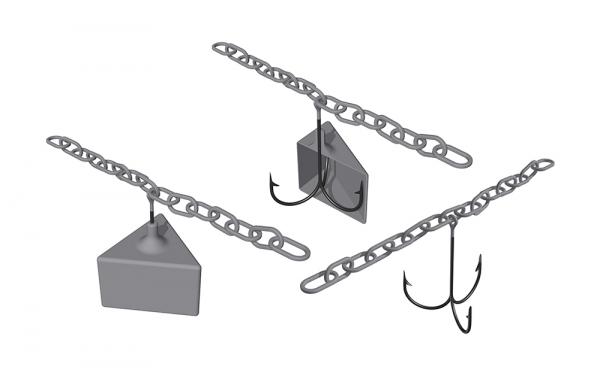BY LETTER
Mobility Denial Hooks Chain
Culture and Society > Politics & Government > Law and Jurisprudence
Technology > Application > Weapons > Personal Weapons
Technology > Application > Weapons > Surface Weapons
Technology > Application > Weapons > Personal Weapons
Technology > Application > Weapons > Surface Weapons
 Image from Johnny Yesterday |
Mobility Denial Hooks Chain (MDHC) is a class of deployable restraint technology for subduing mobile targets. MDHC's primary application is in the subduing of vecs, cyborgs, and other beings which are too powerful to be subdued by sticky-foams or other means in environments without pervasive or easily deployable Utility Fog. MDHC shares some similarities with Mobility Denial Myoribbon (MDMr), however the two technologies work in different ways.
As the name suggests, in its most basic form it consists of a length of chain with periodically spaced hooks, which is deployed against targets and wraps around and snags upon them, removing their freedom of mobility. The chain-and-hooks structure is prone to self-snag, which makes the design highly effective against body materials and/or topologies which would not otherwise be vulnerable to being snagged by hooks. Minimally, hooks catch on one another. Additionally, the hooks may snag within the chain links. Before MDHC makes contact with a target, valved canisters surround the hooks to prevent self-snagging. This allows many meters of MDHC to be stored inside grenade canisters or on deployment spools.
MDHC is deployed in diverse ways. At close range, it may be projected from chain-guns. Self-propelled grenades can deploy out to hundreds or thousands of kilometers. It can lie in wait on the ground, a vertical surface, or suspended from above, cloaked via optical phased array.
Unlike MDMr, MDHC lacks myomemetic actuators, and achieves mobility via propulsive drone pods1 which are spaced periodically along a length of chain. Or, in the case of relatively short lengths of chain, the drone pods may only be attached to the ends, forming a self-deploying bolas.
Some chain-gun varieties project singular chains which remain attached to the gun, and are used to reel-in the target. Chain-nets and fractally-branching chains are particularly effective.
MDHC is a permanent fixture in various environments that are statistically prone to physical altercations. Chain-guns, c-cannons, or grenade launchers are strategically placed (typically camouflaged) within ceilings, walls, environmental objects, or floors/ground.
[1] In gases or liquids, drone pods are typically propelled by recessed, grill-covered jet turbines, which are spun by common aggregated nano-electrostatic motors. In vacuum environments, chemical rocket motors, with their limited range, are necessitated by physical law and safety considerations.
Related Articles
Appears in Topics
Development Notes
Text by Johnny Yesterday
Initially published on 27 October 2015.
Initially published on 27 October 2015.






